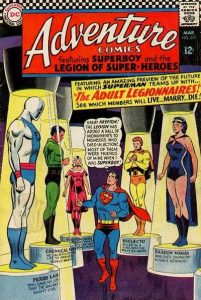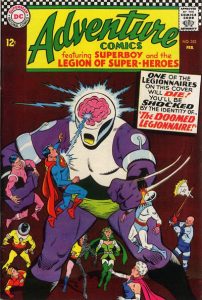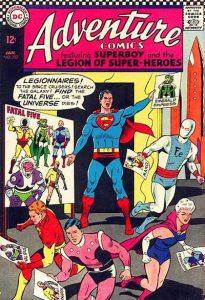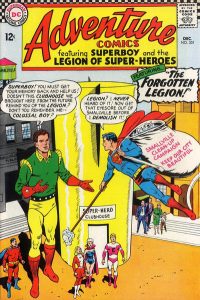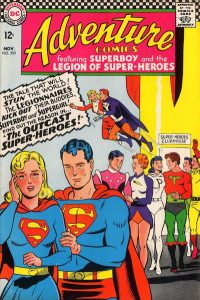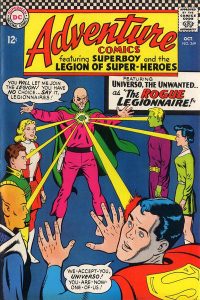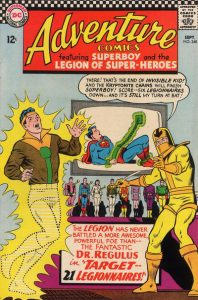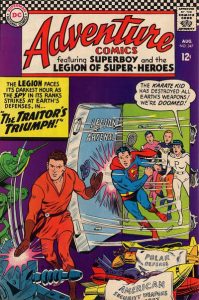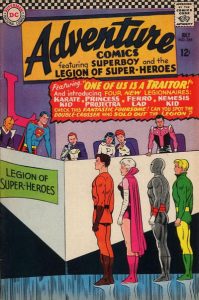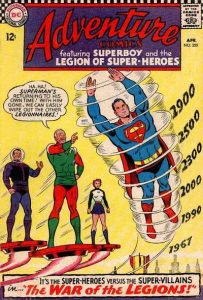 This 12-page adventure is not so much a continuation of “The Adult Legion” as a sequel. It is teased at the end of the previous issue’s full-length story, with the reveal that Ferro Man was under the control of the Legion of Super-Villains, but it feels fairly disconnected otherwise. Superman leaves right at the beginning, to return to the 20th Century, and Timber Wolf has just vanished between issues.
This 12-page adventure is not so much a continuation of “The Adult Legion” as a sequel. It is teased at the end of the previous issue’s full-length story, with the reveal that Ferro Man was under the control of the Legion of Super-Villains, but it feels fairly disconnected otherwise. Superman leaves right at the beginning, to return to the 20th Century, and Timber Wolf has just vanished between issues.
The reduction in force was necessary to match the LSH and LSV person for person, so that they could face each other in single combat after the Super-Villains had kidnapped Brainiac 5.

